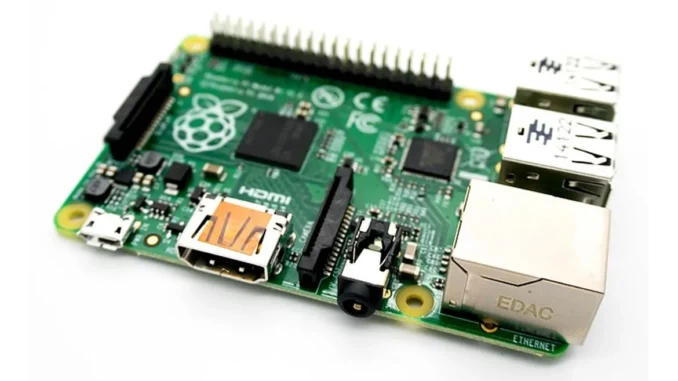
Summary
Raspberry Pi 5: Transforming Affordable Tech into a Network Storage Solution
Amidst the growing demand for cost-effective and efficient data storage solutions, Raspberry Pi 5 emerges as a viable contender for building a Network Attached Storage (NAS) system. This compact yet powerful device is setting a new standard for hobbyists and small businesses seeking centralised data access without incurring high costs. Leveraging the open-source software OpenMediaVault, Raspberry Pi 5 promises a seamless setup for managing and accessing files across networks. As Thomas Hargrove, a tech analyst, notes, “The Raspberry Pi 5 is a game-changer for DIY NAS setups, combining affordability with flexibility.”
Main Article
The Economic Appeal of Raspberry Pi 5
In the current economic climate, where cost management is pivotal, the Raspberry Pi 5 offers a compelling combination of affordability and performance. Traditional NAS solutions can be prohibitively expensive, especially for small businesses and individual users. The Raspberry Pi 5, however, provides a budget-friendly alternative, allowing users to configure a personalised NAS system at a fraction of the cost. This device is not only affordable but also maintains low power consumption, making it an environmentally friendly choice for continuous operation.
Customisability Meets Community Support
One of the standout features of the Raspberry Pi 5 is its flexibility. Users can install a variety of operating systems and software, tailoring the device to their specific storage needs. The robust support from the Raspberry Pi community enhances this aspect, offering a plethora of resources and troubleshooting assistance. This support network is invaluable for both novices and seasoned tech enthusiasts, facilitating a smoother setup and operational process.
Setting Up Your Raspberry Pi 5 NAS
To convert a Raspberry Pi 5 into a NAS, several components are necessary: a Raspberry Pi 5 unit, a microSD card of at least 32GB, a stable power adapter, an external hard drive or SSD, and a reliable network connection. The setup process involves preparing the SD card with Raspberry Pi OS Lite, a step essential for compatibility with OpenMediaVault. Users must download the Raspberry Pi Imager tool, select the appropriate OS, and configure settings such as hostname and WiFi, before writing the OS to the SD card.
Once the SD card is ready, it should be inserted into the Raspberry Pi 5, which then needs to be connected to the network, preferably via Ethernet for stability. Accessing the Raspberry Pi via SSH from a terminal session allows for the installation of OpenMediaVault, an intuitive storage management solution.
Installation and Configuration of OpenMediaVault
To install OpenMediaVault, users need to execute a specific command in the terminal. This process is straightforward, yet the efficiency and reliability of the NAS setup largely depend on following each step meticulously. Post installation, OpenMediaVault empowers users to manage their storage easily, providing functionalities such as automated backups, user access control, and media streaming.
Detailed Analysis
The introduction of Raspberry Pi 5 as a NAS solution signifies a broader trend towards decentralisation and personalisation in the tech industry. As cloud storage services face scrutiny over privacy and data security, personal NAS systems offer control and peace of mind. Furthermore, the energy-efficient profile of Raspberry Pi 5 aligns with global shifts towards sustainable technology practices. This move towards personal NAS systems reflects a growing consumer demand for both economic and ecological responsibility in tech solutions.
Moreover, the strong community support surrounding Raspberry Pi products cannot be overstated. It provides a safety net for users venturing into the complexities of NAS setups, ensuring that even those with limited technical expertise can successfully deploy and maintain their systems.
Further Development
As the Raspberry Pi 5 continues to gain traction as a NAS solution, future updates and enhancements are expected to further streamline the setup and operational processes. Potential developments include more sophisticated software integrations, expanded storage compatibility, and enhanced security features. Users and developers alike are anticipating these advancements, which could solidify Raspberry Pi 5’s position as a cornerstone in the DIY NAS market.
With its burgeoning popularity, the Raspberry Pi 5 is poised to inspire further innovation within the tech community. Readers are encouraged to stay updated with ongoing coverage and analyses as this story develops, exploring the broader implications of Raspberry Pi’s impact on technology and data management practices.

